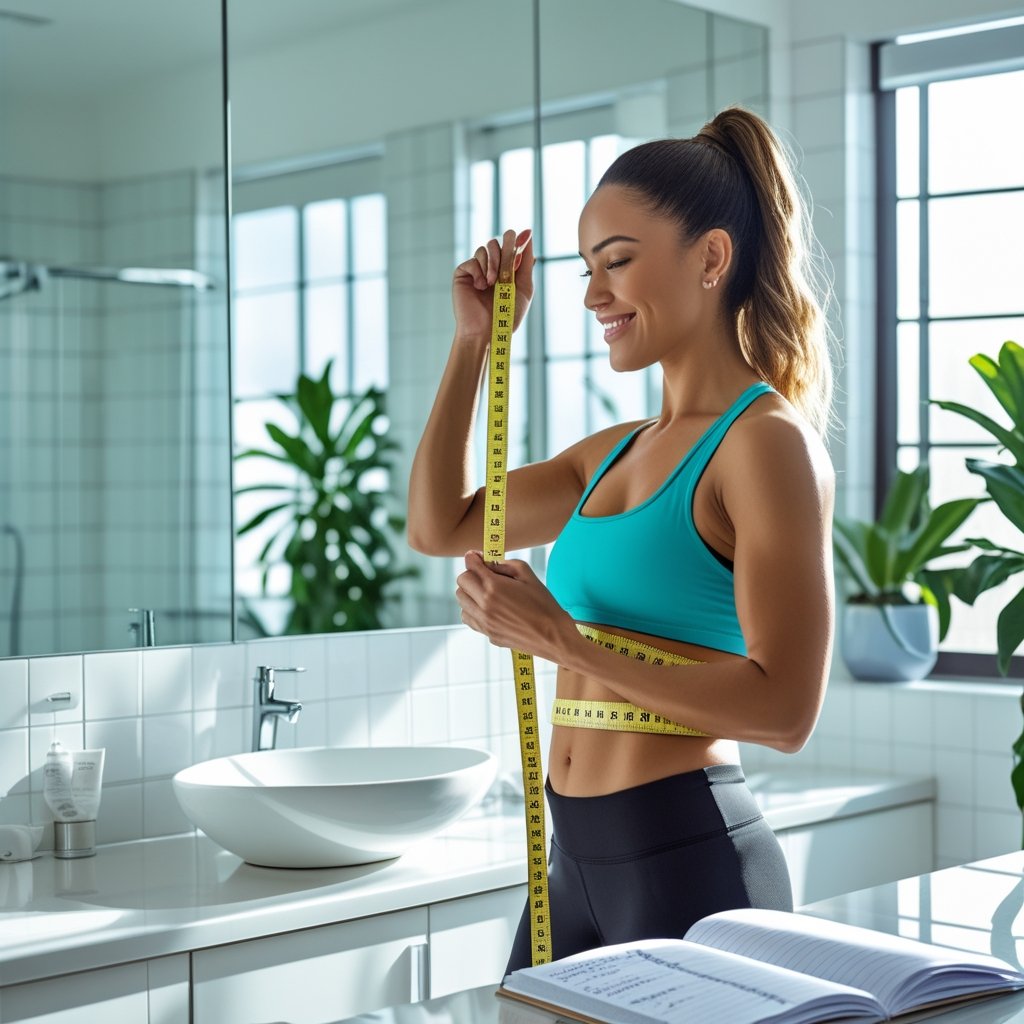You can weigh yourself without a scale by tracking body measurements, using before-and-after photos, testing clothes fit, or estimating body mass with simple at-home techniques. These methods provide reliable feedback on your health and progress—no special equipment needed.
Understanding your body’s changes is important for anyone on a fitness, weight loss, or muscle gain journey. Scales can be misleading or unavailable, but there are many effective, science-backed alternatives. Here’s exactly how to track your progress without stepping on a scale.

Why People Choose Not to Use Scales
- Scales can be inaccurate or inconsistent.
- Weight fluctuates daily (water, food, muscle, etc.).
- Some people find scales discouraging or anxiety-inducing.
- Many want to track real progress, not just a number.
Fortunately, several easy and affordable ways can help you accurately monitor your fitness without a scale.
Best Ways to Track Your Weight Without a Scale
1. Track Your Body Measurements
Using a soft measuring tape, you can easily measure key areas:
- Waist
- Hips
- Chest
- Thighs
- Arms
How to do it:
- Measure the same spot every 2–4 weeks.
- Write down your results for each body part.
- Compare over time—reductions often indicate fat loss, even if the scale wouldn’t show it.
Tip: Many fitness experts recommend this over weekly weigh-ins. It’s a direct, visible way to see your progress (Steel Supplements, 2024).
2. Monitor How Your Clothes Fit

If your favorite jeans or dress start to feel looser, that’s a clear sign you’re losing weight or changing body composition.
What to do:
- Try on the same item of clothing every few weeks.
- Notice if it fits differently—especially around the waist and hips.
Why it works: Clothes can show subtle changes that a scale can’t, boosting your motivation and helping you notice real results.
3. Take Progress Photos
Photos offer a visual, undeniable record of your body’s changes. Many personal trainers suggest monthly or biweekly photos to track your fitness journey.
Best practices:
- Use the same lighting, pose, and clothing.
- Take front, side, and back photos.
- Compare each month for visible differences.
Example: Fitness influencers often use this method on social media to document their progress. It’s simple, free, and powerful.
4. Use Body Fat Calipers or Skinfold Measurements
Calipers help estimate body fat percentage, giving a more accurate picture than weight alone.
How to use:
- Pinch skin at set points (waist, tricep, thigh, etc.).
- Use calipers to measure the thickness.
- Enter measurements into a body fat calculator app or online tool.
Note: For most accuracy, ask a friend or trainer for help. Calipers cost $10–$30 online (Powerlifting Technique, 2024).
5. Try the Water Displacement (Archimedes’) Method
If you’re curious and up for an experiment, you can estimate your body’s mass using water displacement.
How it works:
- Fill a bathtub or large container to the brim.
- Submerge yourself completely (except head above water).
- Collect and measure the displaced water.
- Calculate your volume and estimate mass (1 liter of water = 1 kg).
Drawbacks: It’s messy and less practical, but still a fun science-based option!
6. Track Fitness and Performance Gains
Your strength and endurance improvements say a lot about your body composition, even if your weight stays the same.
Ideas:
- Record personal bests in running, cycling, or weightlifting.
- Track how many push-ups, squats, or minutes of cardio you can do.
- Notice if you’re able to lift heavier or go farther week by week.
Performance gains often come with positive body changes—even if you never step on a scale.
Advanced & Medical Alternatives
- Body Fat Scanners (Bioelectrical Impedance): Available at some gyms for $20–$50 per session.
- DEXA Scans: Offer highly accurate body fat/lean mass breakdown, usually $70–$150.
- Bod Pod or Hydrostatic Weighing: Lab-based, professional options (prices vary, check with local clinics).
Note: These advanced methods offer great accuracy, but for most people, at-home tracking is more than enough. Always consult with your healthcare provider before making big health decisions.
Frequently Asked Questions
Can I estimate my weight using home objects?
Yes—if you have access to a sturdy balance (like a seesaw) and known weights (water jugs, food bags), you can estimate your weight by balancing your body against them. However, this is rarely practical for adults.
Will measuring tape methods work for muscle gain?
Absolutely. Measuring arms, thighs, or chest helps track muscle increases as well as fat loss.
How often should I check progress without a scale?
Every 2–4 weeks is ideal. Avoid checking daily, since progress is best seen over time.
Are digital smart scales better?
Smart scales give added data (body fat %, muscle, etc.) but can still fluctuate and aren’t always accurate. Combine several methods for the best picture.
Quick Comparison Table
| Method | What You Need | Pros | Cons |
|---|---|---|---|
| Tape Measure | Soft tape | Cheap, simple, accurate | No body weight |
| Clothes Fit | Favorite clothing | Encouraging, visual | No exact numbers |
| Photos | Smartphone/camera | Great visual log | Needs consistency |
| Calipers | $10–$30 tool | Body fat % | Needs technique |
| Water Displacement | Bathtub, time | Science-based | Messy, impractical |
| Fitness Tracking | Workout log | Tracks real progress | Not weight-specific |
| DEXA/Bod Pod | Appointment, $ | Most accurate | Cost, access |
Conclusion
Tracking your progress without a scale is easy, reliable, and even more motivating than relying on a single number.
Try a few methods, combine what works best for you, and celebrate your results along the way!
Ready to take control of your health journey? Try these methods today and share your progress with friends—or your favorite online community.
